Reunited and it feels so good!
Well, sometimes at least.
It’s not too often that players leave an NHL team, just to wind up back there before their career is finished. Sometimes though, familiarity wins out.
Despite the rarity, the Buffalo Sabres re-acquired former captain Jason Pominville the day before 2017’s version of Free Agent Frenzy kicked off. The Sabres acquired Pominville and Marco Scandella from the Minnesota Wild for the younger Tyler Ennis and Marcus Foligno.
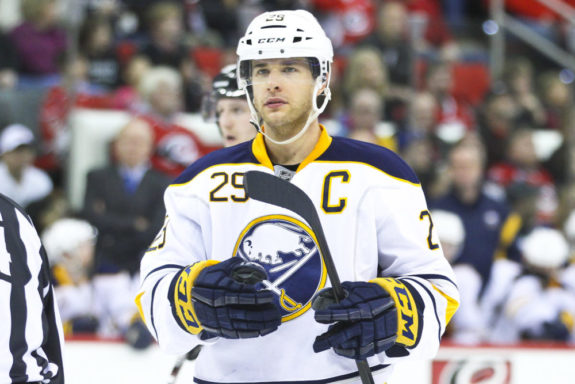
The deal reunites Pominville with the team he spent the first nine years of his career with. After a five-year hiatus with the Wild, Pominville looks destined to finish his career with the team who drafted him.
Some players enjoy success once they reunite, while others flame out quickly. There are examples of both here on this list of ten players who reunited with old clubs.
Vernon Fiddler
Let’s start with the most recent example aside from Pominville. Vernon Fiddler’s return to the music city wasn’t as notable as the re-acquisition of Pominville. Fiddler spent the first six years of his career in Nashville, carving out a niche for himself as a useful utility player.
After playing with the Arizona Coyotes, Dallas Stars and New Jersey Devils for parts of eight seasons, the Predators brought back Fiddler for a reunion in 2017. Fiddler was a passenger as the Predators reached their first ever Stanley Cup finals, playing in nine of the Predators 22 playoff games. His lone goal was the game winner in Game One of the Western Semifinals against the St. Louis Blues.
Johnny Oduya
This reunion didn’t go well for Johnny Oduya and the Chicago Blackhawks. The veteran Swedish defenceman was a key cog for the Blackhawks during their cup victories in 2013 and 2015. The Blackhawks were looking for that same reliability when they traded for him before the 2017 Stanley Cup Playoffs.
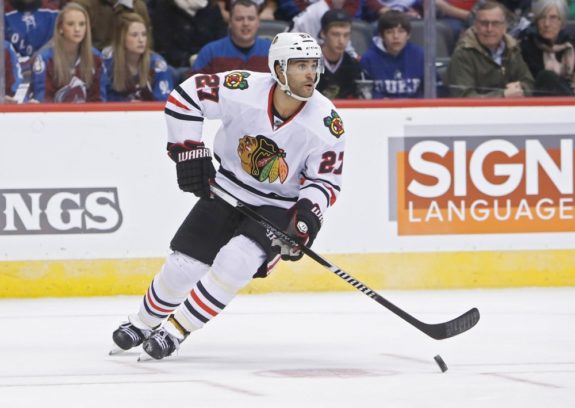
There was no magic to be recaptured this time around for Oduya and the Blackhawks. They were unceremoniously and surprisingly swept by Fiddler and the Predators during their first round matchup. At least Oduya can plug his ears with two Cup rings and forget about his latest tenure with the Blackhawks.
Andrew Ladd
Another reunion gone wrong for the Blackhawks. Andrew Ladd was reacquired from the Winnipeg Jets prior to the 2016 Trade Deadline. The Blackhawks gave up Marko Dano and two draft picks, including a first rounder, in hopes that Ladd would help them win their second straight Stanley Cup.

Ladd was on fire to finish the regular season, scoring eight goals and 12 points in 19 games leading up to the playoffs. When the playoffs actually started, Ladd wasn’t noticeable. The Blackhawks were defeated by the St. Louis Blues in seven games, before Ladd signed a mammoth contract with the New York Islanders during the offseason.
Scott Gomez
The native of Anchorage, Alaska played for a variety of teams during his NHL career, but most of his success came with the New Jersey Devils. He was living the dream during his first NHL season, winning both the Calder Memorial Trophy and the Stanley Cup. He would win another Stanley Cup with the Devils in 2003, before departing in free agency in 2007.
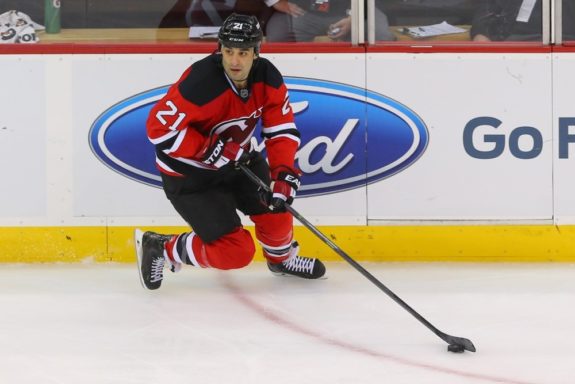
That mammoth contract with the New York Rangers was the beginning of Gomez’s decline. Thankfully for the Rangers (sorry Canadiens fans), they were able to turn Gomez into Ryan McDonagh. Despite Gomez declining in points over the years, he found a spot in New Jersey during the 2014-15 season.
In three straight seasons before 2014-15, Gomez failed to put up more than 15 points. With New Jersey that year, he had 34 points in 58 games, and ended up as their fourth-highest scoring forward. Call it a mini-renaissance for the slick-playmaker, who re-lived some of his glory days on a mediocre Devils squad.
Roberto Luongo
The Roberto Luongo saga was well-documented in Vancouver. Who knows, maybe there will be a movie about it when he retires. Perhaps a mini-TV series on TSN?
Before Vancouver, Luongo made a name for himself as a Florida Panther following a brutal trade by the beleaguered Mike Milbury. In 2006, he was traded to the Canucks, where he backstopped the team during the best run in franchise history.
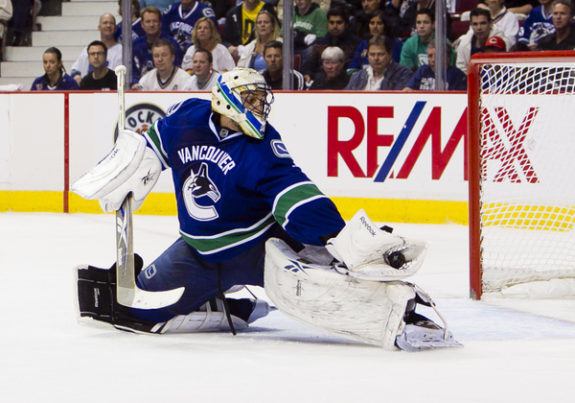
Luongo was the Vancouver Canucks franchise leader in wins and shutouts among other stats, but the Canucks were prepared to go with the younger Cory Schnieder. After Schnieder got traded, Canucks fans assumed Luongo would be their starter until he retired. That was until John Tortorella came along.
Two days after being benched during the winter classic, Luongo was traded back to the Florida Panthers. He’s continued to put up solid numbers in Florida, even leading them to a division crown in 2015-16. Despite being the oldest goalie in the NHL, Luongo continues to flourish.
Mike Grier
Mike Grier was perhaps best remembered as a Edmonton Oiler or San Jose Shark, but neither of those team decided to reaqcuire him in a trade.
Instead, it was the Buffalo Sabres who reunited with Grier. The native of Detroit, Michigan was a stocky, solid utility player during his NHL career. Unlike some utility players, Grier was also able to find the back of the net. He hit double digits in goals during seven of his 15 NHL seasons.
The Sabres traded bust-prospect Jakub Klepis to the Washington Capitals for Grier in 2004. Following the lockout, Grier was part of a Sabres team that reached the Eastern Conference Final.
He re-signed with the Sabres for the last two seasons of his career, making the playoffs in those seasons. Grier was the type of player you wanted in the playoffs, reaching the postseason in 11 of his 15 NHL seasons.
Trevor Linden
Trevor Linden was undoubtedly the face of the franchise in Vancouver for many seasons. Linden was a captain at age 20, who nearly led his team to the Stanley Cup in 1994. It was all downhill after that, as Vancouver-favourite pushed Linden out of Vancouver with an infamous tirade.
The Linden trade worked out well for the Canucks. He was dealt to the New York Islanders for Todd Bertuzzi, Bryan McCabe and Jarkko Ruutu. Bertuzzi and Ruutu were fan favourites for years, while McCabe was turned into one of the Sedins.
With Keenan out of the mix, the Canucks brought home Linden in a trade with the Washington Capitals in November, 2001. Linden was no longer the star in Vancouver with the West Coast Express and the Sedins on the rise. Instead, Linden was an effective two-way, middle-six player in Vancouver for seven more seasons. His seven points in 12 games during Vancouver’s 2006-07 playoff run was memorable, especially since Linden was playing in a bottom-six role at the time.
Peter Forsberg
Arguably one of the greatest NHL talents during the last 25 years, Forsberg was an absolute offensive force when he was at his best. He helped the Colorado Avalanche win the Stanley Cup in both 1996 and 2001. Forsberg also won the Calder, Art Ross Trophy and Hart Memorial Trophy during his illustrious career.
Unfortunately, injuries derailed an otherwise amazing career for Forsberg. He played parts of two seasons with the Philadelphia Flyers and Nashville Predators, maintaining a point-per-game pace over that time.

He reunited with the Avalanche time before the end of his career. Once was in 2007-08, where he registered 14 points in nine games. He returned three years later for a two-game stint, but injuries had taken their toll by then, and Forsberg was forced to retire. His 1.25 points-per-game average remains the eighth best mark of all time.
Wendel Clark
One of the most iconic Toronto Maple Leafs of the last 30 years made more than one reunion to the team that drafted him first overall in 1985. For almost a decade, he was a key part of the Maples Leafs organization, leading them on two long playoff runs before an earth-shattering trade in June of 1994.
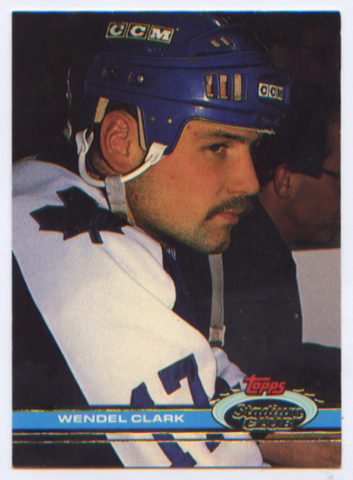
The trade worked out for the Maple Leafs, who got their new face of the franchise in Mats Sundin. Just two years later, the Maple Leafs would re-acquire Clark at the trade deadline. It was a unity of the old face of the franchise with the new one.
Clark would play a little more than two seasons with the Maple Leafs. He then bounced around with the Tampa Bay Lightning, Detroit Red Wings, and Chicago Blackhawks before joining the Leafs one last time at the end of he 1999-00 season. Clark joined the team for one last postseason run despite a ravaged and run-down body.
Howie Morenz
One of the greatest hockey players of his generation, Howie Morenz was the league leader in points by the time he stopped playing hockey, with 472 points. the star centre led the Montreal Canadiens to three Stanley Cups, winning three Hart Trophy’s in the process.
Morenz’s first major injury in January of 1994 led to a decline in production, and Canadiens fans booed him. It led to a trade to the Chicago Blackhawks. He played with the Blackhawks and New York Rangers for two seasons, before rejoining the Canadiens in 1936-37.
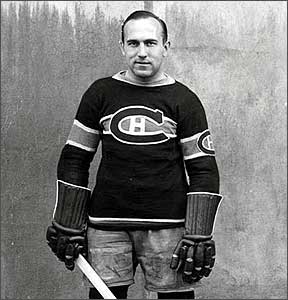
A gruesome leg injury cut Morenz’s season short after he enjoyed moderate success. His leg got stuck in the boards after falling down, and Blackhawks defenceman Earl Siebert landed on his leg with full force. Morenz’s leg was fractured in four places.
Just a month and a half after his injury, he passed away after having a heart attack in hospital. His death was mourned by thousands in Montreal, and he was forever remembered as one of the greatest players in not just the Canadiens organization, but in all of hockey.
Earlier this year, he was named one of the 100 greatest players of all time.
Who would you like to add to the list? Let me know in the comments.